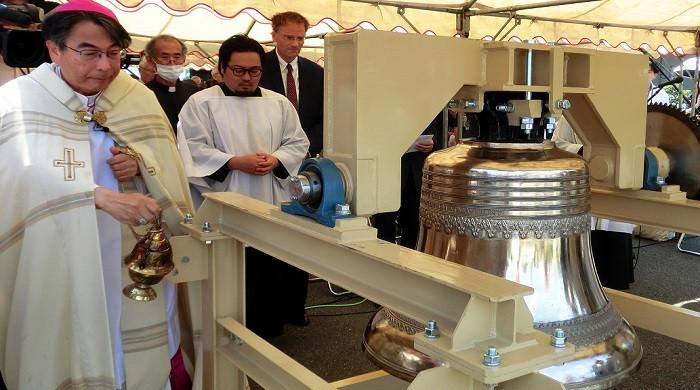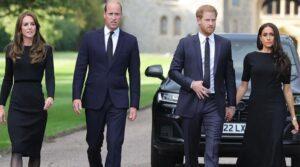The bells of the twin cathedral will sound in unison on Saturday at Japan Nagasaki for the first time from the city’s atomic bombardment 80 years ago, commemorating at the time the atrocity took place.
On August 9, 1945, at 11:02 am, three days after a nuclear attack against Hiroshima, the United States launched an atomic bomb in Nagasaki.
Around 74,000 people were killed in the port city of the Southwest, in addition to the 140,000 dead in Hiroshima.
Days later, on August 15, 1945, Japan surrendered, marking the end of World War II.
Historians have discussed whether the bombings finally saved lives by putting an end to the conflict and avoiding a land invasion.
But those calculations meant little for the survivors, many of whom fought against decades of physical and psychological trauma, as well as the stigma that often came with being a Hibakusha.
On Saturday, the two bells of the Immaculate Cathedral of the conception of Nagasaki will sound together for the first time since 1945.
The imposing red brick cathedral, with its twin towers on a hill, was rebuilt in 1959 after it was almost destroyed in the monstrous explosion just a few hundred meters away.
Only one of his two bells recovered from the rubble, leaving the tower of the north in silence.
With funds from the American parishioners, a new bell was built and the tower was restored, and will change on Saturday at the exact moment the bomb was thrown.
The main priest of the cathedral, Kenichi Yamamura, believes that the restoration of the bell “shows the greatness of humanity.”
“It’s not about forgetting the wounds of the past, but recognizing them and taking measures to repair and rebuild, and to do so, work together for peace,” Yamamura told AFP.
He also sees the bells as a message for the world, shaken by multiple conflicts and caught in a new frantic arms race.
“We must not respond to violence with violence, but to demonstrate through our way of living, pray, how insensitive another life is to take,” he said.
Almost 100 countries will participate in this year’s commemorations, including Russia, which has not been invited since its 2022 invasion of Ukraine.
Israel is also expected, whose ambassador was not invited last year by the war in Gaza, will attend this weekend.
This year, “we wanted participants to come and witness the reality of the catastrophe that a nuclear weapon can cause,” said a Nagasaki official last week.
An American university professor, whose grandfather participated in the Manhattan project, which developed the first nuclear weapons, headed the Bell project.
During his investigation in Nagasaki, a Japanese Christian told him that he would like to listen to the two bells of the cathedral in his life.
Inspired by the idea, James Nolan, professor of sociology at Williams College in Massachusetts, embarked on a series of one -year conferences on the atomic bomb in the United States, mainly in the churches.
He managed to raise $ 125,000 of American Catholics to finance the new bell.
When it became known in Nagasaki in spring, “the reactions were magnificent. There were literally crying people,” said Nolan.
Many American Catholics who knew were not aware of the painful history of the Christians of Nagasaki, who, turned into the sixteenth century by the first European missionaries and then persecuted by Japanese shogunes, maintained their living faith clandestinely for more than 250 years.
This story was told in the novel “Silence” by Shusaku Endo and adapted to a Martin Scorsese movie in 2016.
He explains that American Catholics also showed “compassion and sadness” upon learning of the perseverance of the Christians of Nagasaki after the atomic bomb, which killed 8,500 of the 12,000 faithful of the parish.
They were inspired by the “will to forgive and rebuild.”




